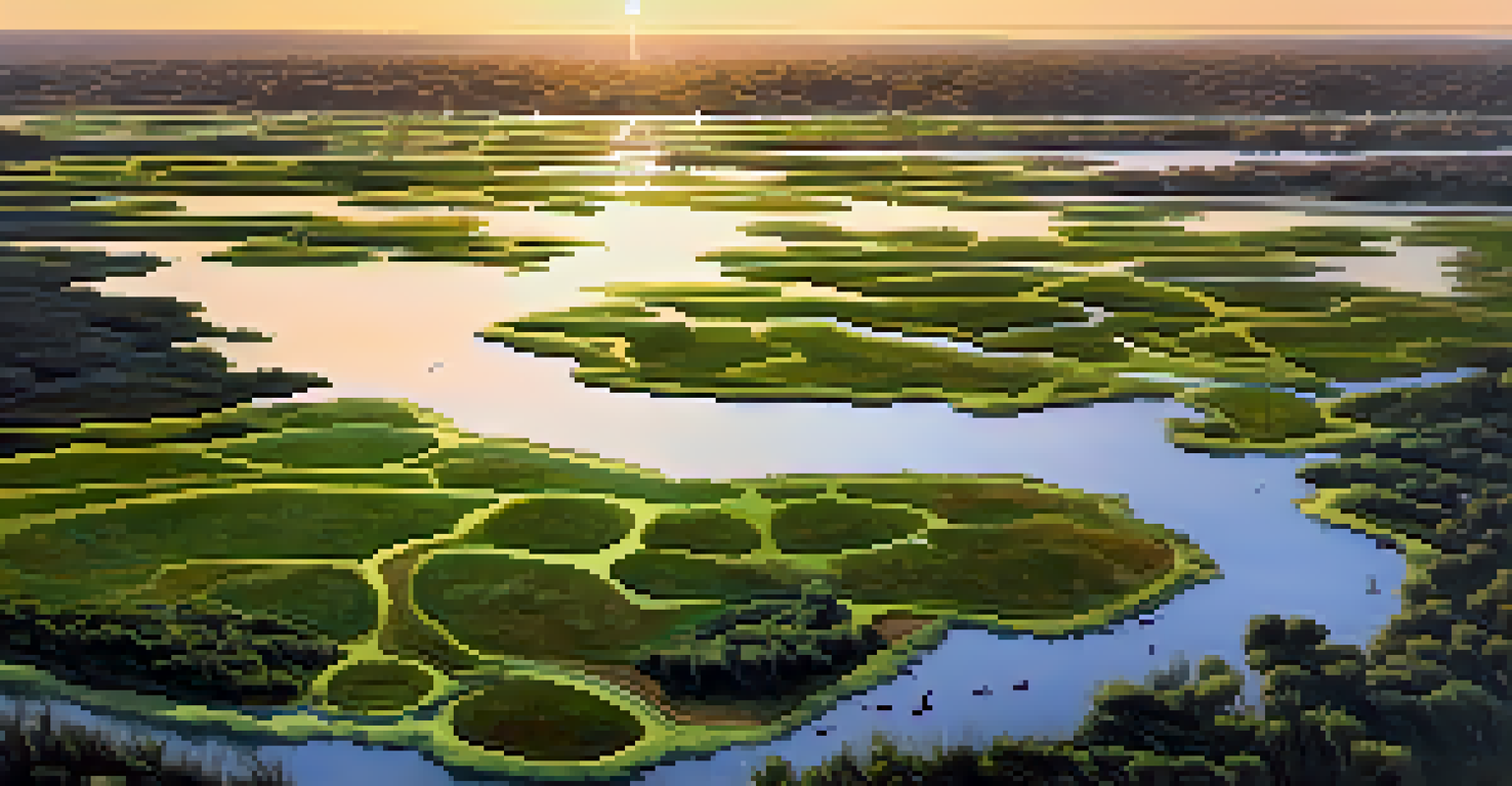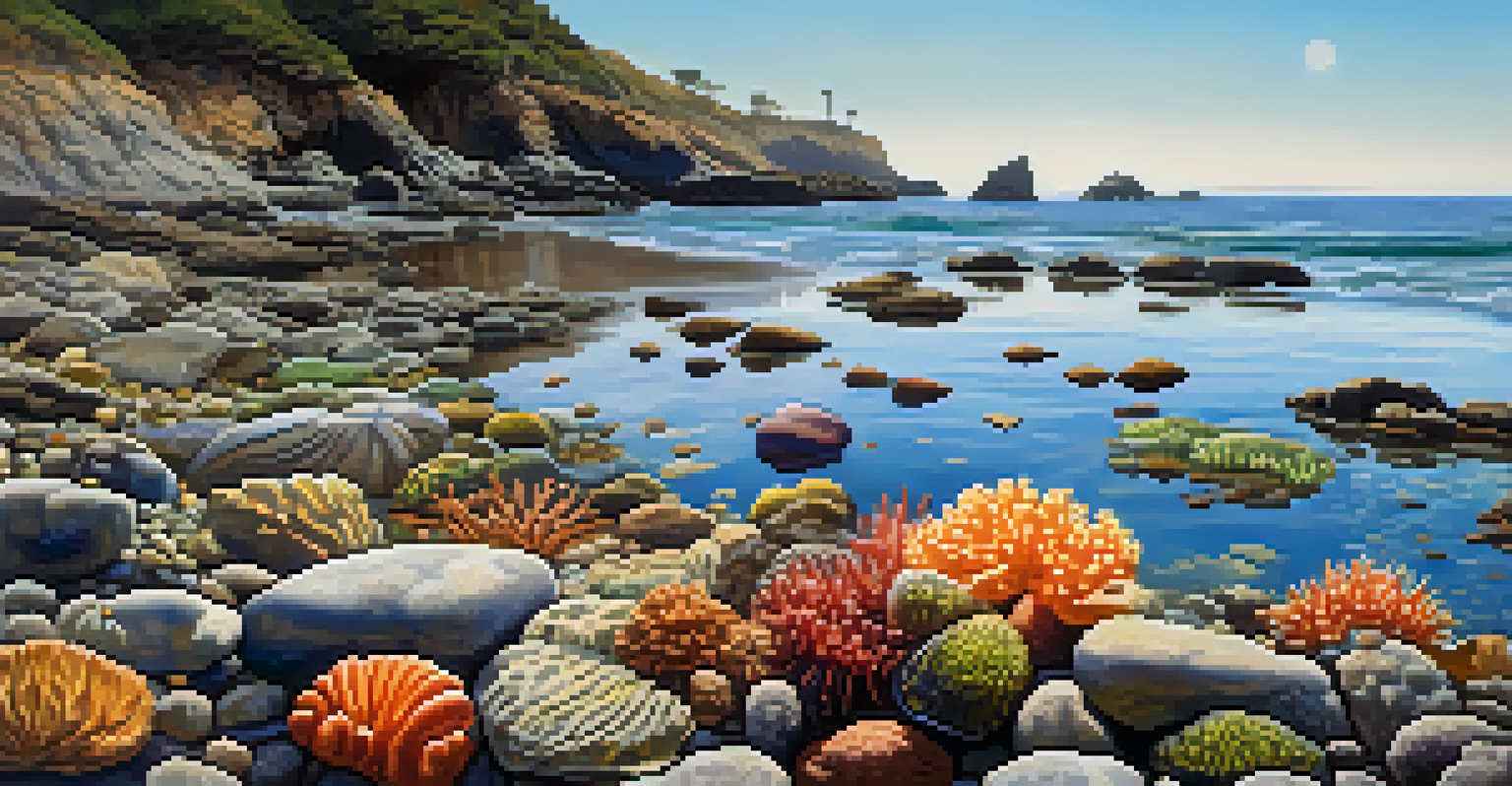The Importance of Biodiversity in San Diego's Coastal Areas

What is Biodiversity and Why Does It Matter?
Biodiversity refers to the variety of life forms on Earth, including plants, animals, and microorganisms. It plays a crucial role in maintaining the health of our ecosystems. In essence, more biodiversity means more resilience, helping ecosystems withstand changes like climate shifts or human impacts.
Biodiversity is the foundation of ecosystem services, which are essential for human well-being.
In San Diego's coastal areas, biodiversity is particularly vital, as these regions serve as habitats for numerous species, some of which are found nowhere else in the world. The unique combination of land and sea ecosystems supports a rich tapestry of life, contributing to both ecological balance and local economies.
Moreover, biodiversity enhances ecosystem services such as clean air and water, pollination of crops, and coastal protection from storms. In simpler terms, the more diverse our ecosystems, the better they can support us and the planet.
Key Coastal Ecosystems in San Diego
San Diego's coastal areas are home to several distinct ecosystems, including sandy beaches, wetlands, and rocky intertidal zones. Each of these habitats supports a unique array of species and contributes to the overall health of the coastal environment. For instance, wetlands serve as nurseries for fish and other marine life, while sandy beaches provide nesting sites for shorebirds.

These ecosystems are interconnected, meaning that the health of one area can significantly impact others. For example, healthy wetlands filter pollutants and help maintain water quality, benefiting nearby beaches and marine habitats. This interconnectedness underscores the need for comprehensive conservation efforts.
Importance of Coastal Biodiversity
Biodiversity enhances ecosystem resilience, supporting clean air, water, and essential services for both nature and humans.
Overall, these coastal ecosystems not only enhance biodiversity but also provide recreational opportunities for residents and tourists alike. They're essential for activities such as fishing, surfing, and wildlife watching, making them vital to San Diego's culture and economy.
Threats to Biodiversity in Coastal Areas
Despite their importance, San Diego's coastal ecosystems face numerous threats. Urban development, pollution, and climate change are among the primary challenges impacting biodiversity. As cities expand and more land is paved over, natural habitats are lost, leading to a decline in species diversity.
In nature’s economy, the currency is not money, it is life.
Pollution from runoff can cause harmful algal blooms, which not only harm marine life but also affect water quality for humans. Additionally, the changing climate poses risks like rising sea levels and increased storm intensity, further stressing these already fragile ecosystems.
These threats highlight the urgent need for conservation efforts. By recognizing and addressing these challenges, we can work towards protecting the rich biodiversity that is so essential to San Diego's coastal areas.
Conservation Efforts and Their Impact
Fortunately, various organizations and community groups in San Diego are dedicated to conserving coastal biodiversity. These efforts include habitat restoration projects, pollution clean-up initiatives, and educational programs aimed at raising awareness about the importance of biodiversity. For instance, beach clean-ups not only help remove trash but also foster a sense of community stewardship.
Moreover, local governments are increasingly recognizing the importance of biodiversity in their planning processes. By integrating conservation goals into development plans, they can help ensure that growth happens in harmony with nature, preserving critical habitats for future generations.
Threats to Coastal Ecosystems
Urban development, pollution, and climate change pose significant risks to the biodiversity and health of San Diego's coastal areas.
The impact of these efforts can be seen in the recovery of local species and the restoration of degraded habitats. When communities come together to protect their natural resources, it contributes to healthier ecosystems and a better quality of life for all residents.
The Role of Community in Biodiversity Conservation
Community involvement is a key factor in successful biodiversity conservation. Local residents have a unique understanding of their environment and can play an active role in protecting it. From participating in citizen science projects to advocating for sustainable practices, community engagement is essential.
For example, local beach clean-ups not only help remove debris but also raise awareness about the impacts of pollution on marine life. When community members take part in these activities, they become more invested in the health of their environment, fostering a culture of conservation.
Additionally, educational programs in schools can ignite a passion for nature in younger generations. By instilling a sense of responsibility towards the environment, we can cultivate future advocates for biodiversity conservation.
Sustainable Practices to Protect Coastal Biodiversity
Adopting sustainable practices is crucial in protecting San Diego's coastal biodiversity. Simple changes in daily behavior can have a significant impact, such as reducing plastic use, conserving water, and choosing sustainable seafood. Each small action contributes to a larger collective effort to maintain healthy ecosystems.
Moreover, supporting local businesses that prioritize eco-friendly practices can create a positive ripple effect. Whether it’s shopping at farmers' markets or participating in local conservation initiatives, these choices help promote sustainability in the community.
Community's Role in Conservation
Community involvement is vital for effective biodiversity conservation, fostering local stewardship and promoting sustainable practices.
It's also important to advocate for policies that protect coastal areas. Engaging with local representatives and supporting conservation initiatives can lead to meaningful change at a broader level, ensuring that San Diego's coastal biodiversity is safeguarded for future generations.
The Future of Biodiversity in San Diego's Coastal Areas
The future of biodiversity in San Diego's coastal areas depends on our actions today. As awareness of the importance of biodiversity grows, so does the commitment to safeguarding these vital ecosystems. By collaborating with scientists, local governments, and community members, we can create a more sustainable future.
Innovative approaches, such as creating marine protected areas, are also gaining traction. These designated zones restrict certain activities to help ecosystems recover and thrive, providing a safe haven for marine life. Such measures can lead to healthier populations of fish and other species, benefiting both the environment and local fisheries.

Ultimately, the path forward is one of cooperation and dedication. By prioritizing biodiversity, we not only protect the unique ecosystems of San Diego but also enrich our own lives and the lives of future generations.